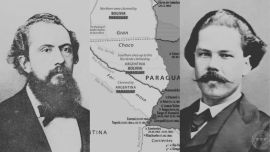Argentina’s currency continued to depreciate in the parallel market on Friday despite tightened restrictions, with the so-called ‘blue’ or informal dollar closing at 185 pesos per greenback on Friday.
At the official exchange rate, the peso was trading at 101.75 per dollar – a gap of more than 90 percent.
The informal exchange rate has soared over the past week to reach its highest point in over a year, even as the Central Bank tightened conditions for acquiring foreign currency in the local market for securities and bonds.
"The most important indicator for the real economy is the official exchange rate. The other prices affect the financial environment," Joaquín Waldman, from the Ecolatina consultancy firm, told AFP.
However, the analyst warned that the widening gap with the ‘blue’ dollar has a negative impact since "it motivates behaviours that lead to depreciation in the official market and also affects inflation, due to the formation of expectations."
Argentina suffers from one of the highest inflation rates in the world, with prices having risen by 25.3 percent in the first half of this year alone. Over the past 12 months, the inflation rate stands at 50.2 percent.
The record was set last October 23 when the greenback reached 195 pesos, as against 84 pesos for the official rate. Since then the parallel dollar has gradually dipped, maintaining a plateau of 140-150 pesos for several months before resuming its upward trend in June.
The parallel market has a slim volume of transactions often overshooting expectations. The informal rate has seen its value advance by nine pesos over the past week, with the Central Bank continuing to purchase dollars to reinforce its reserves.
Elections and devaluation
"The restrictions on economic activities and the proximity of the [midterm legislative] elections [in November] point towards an expansive fiscal policy financed with inevitable money issuance," the Universidad del Salvador in Buenos Aires said in its most recent economic report.
"The new exchange controls have rekindled the expectation of a future devaluation of the peso and driven the rise of the dollar in various segments of the foreign exchange market," the report concluded.
Argentina will hold legislative elections in November, with half of Congress up for renewal. The country remains mired in a harsh three-year recession, with economic challenges having been exacerbated by the Covid-19 pandemic.
Last year, the country’s economy contracted 9.9 percent, though activity has shown signs of recovery in recent months.
"Electoral proximity triggers the purchase of retailers, which are waiting for a devaluation," said Waldman.
In a context of scarce hard currency and peso liquidity in a country which prints money at an intense pace and lacks access to credit markets, Argentina maintains iron money market and capital controls to stem the outflow of hard currency which contributes to pushing the dollar up.
Argentina is negotiating with the International Monetary Fund (IMF) a new credit programme to replace that signed in 2018, whereby the country must reimburse some US$44 billion in the next few years.
Last September the centre-left government of President Alberto Fernández decided to maintain the monthly cap of US$200 for purchases by individual citizens at the official rate, to which a tax of 30 percent and a further levy of 35 percent (known as the 'dólar solidario'), is added, bringing the total cost up to 167.84 pesos.
– TIMES/AFP/NA


























Comments